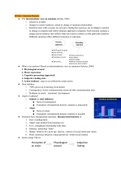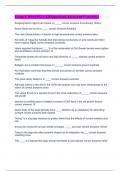Samenvatting
Clinical Child and Adolescent Psychology - Summary
All lectures and articles included. Lecture 1: Emotion Theories Scherer, K.R. (2000). Emotion. In M. Hewstone & W. Stroebe (Eds.). Introduction to Social Psychology: A European perspective (3rd. ed., pp. 151-191). Oxford: Blackwell. Lecture 2: Emotion Expression Jenkins, J.M. & Ball, S. ...
[Meer zien]













